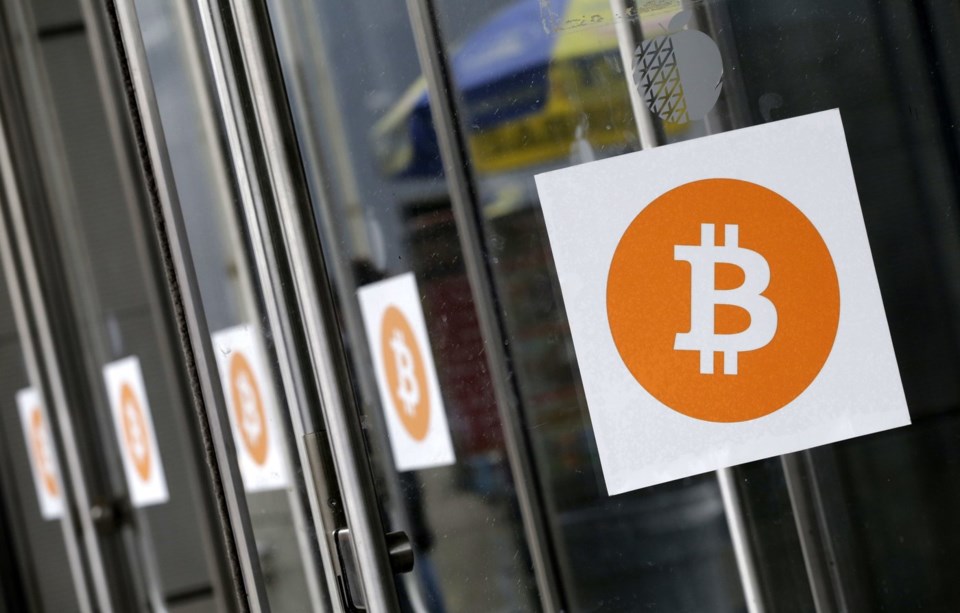NEW YORK (AP) — Bitcoin topped $100,000 for the first time as a massive rally in the world's most popular cryptocurrency, largely accelerated by the election of Donald Trump, rolls on.
The cryptocurrency officially to rose six figures Wednesday night, just hours after the president-elect said he intends to nominate cryptocurrency advocate Paul Atkins to be the next chair the Securities and Exchange Commission.
Bitcoin has soared since Trump won the U.S. presidential election on Nov. 5. The asset climbed from $69,374 on Election Day, hitting as high as $103,713 Wednesday, according to CoinDesk. Just two years ago, bitcoin dropped below $17,000 following the collapse of crypto exchange FTX.
Bitcoin fell back closer to $103,000 early Thursday, but futures are up more than 4%. Even amid a massive rally that has more than doubled the value of bitcoin this year, some experts continue to warn of investment risks around the asset, which has quite a volatile history.
Here’s what you need to know.
Back up. What is cryptocurrency again?
Cryptocurrency has been around for a while now. But, chances are, you’ve heard about it more and more over the last few years.
In basic terms, cryptocurrency is digital money. This kind of currency is designed to work through an online network without a central authority — meaning it’s typically not backed by any government or banking institution — and transactions get recorded with technology called a blockchain.
Bitcoin is the largest and oldest cryptocurrency, although other assets like ethereum, tether and dogecoin have also gained popularity over the years. Some investors see cryptocurrency as a “digital alternative” to traditional money, but the large majority of daily financial transactions are still conducted using fiat currencies such as the dollar. Also, bitcoin can be very volatile, with its price reliant on larger market conditions.
Why is bitcoin soaring?
A lot of the recent action has to do with the outcome of the U.S. presidential election.
Trump, who was once a crypto skeptic, has pledged to make the U.S. “the crypto capital of the planet” and create a “strategic reserve” of bitcoin. His campaign accepted donations in cryptocurrency and he courted fans at a bitcoin conference in July. He also launched World Liberty Financial, a new venture with family members to trade cryptocurrencies.
On Thursday morning, hours after bitcoin surpassed the $100,000 mark, Trump congratulated “BITCOINERS” on his social media platform Truth Social. He also appeared to take credit for the recent rally, writing, “YOU’RE WELCOME!!!”
Crypto industry players welcomed Trump’s election victory last month, in hopes that he would be able to push through legislative and regulatory changes that they’ve long lobbied for — which, generally speaking, aim for an increased sense of legitimacy without too much red tape.
Trump made a move in that direction Wednesday when he said he intends to nominate Paul Atkins to chair the Securities and Exchange Commission. Atkins was an SEC commissioner during the presidency of George W. Bush. In the years since leaving the agency, Atkins has made the case against too much market regulation. He joined the Token Alliance, a cryptocurrency advocacy organization, in 2017.
Under current chair Gary Gensler, the SEC has cracked down on the crypto industry, penalizing a number of companies for violating securities laws. But he’s also faced criticism from industry players in the process, like the chief legal officer of Robinhood, who described Gensler’s approach toward crypto as “rigid” and “hostile.” Gensler will step down when Trump takes office.
One crypto-friendly move the SEC did make under Gensler was the approval in January of spot bitcoin ETFs, or exchange trade funds, which allow investors to have a stake in bitcoin without directly buying it. The Spot ETFs were the dominant driver of bitcoin's price before the election — but, like much of the crypto’s recent momentum, saw record inflows postelection.
What are the risks?
History shows you can lose money in crypto as quickly as you’ve made it. Long-term price behavior relies on larger market conditions. Trading continues at all hours, every day.
At the start of the COVID-19 pandemic, bitcoin stood at just over $5,000. Its price climbed to nearly $69,000 by November 2021, during high demand for technology assets, but later crashed during an aggressive series of rate hikes by the Federal Reserve. And the late-2022 collapse of FTX significantly undermined confidence in crypto overall, with bitcoin falling below $17,000.
Investors began returning in large numbers as inflation started to cool — and gains skyrocketed on the anticipation and then early success of spot ETFs. But experts still stress caution, especially for small-pocketed investors. And lighter regulation from the coming Trump administration could also mean less guardrails.
“I would say, keep it simple. And don’t take on more risk than you can afford to,” Adam Morgan McCarthy, a research analyst at Kaiko, previously told The Associated Press — adding that there isn’t a “magic eight ball” to know for certain what comes next.
What about the climate impact?
Assets like bitcoin are produced through a process called “mining,” which consumes a lot of energy. Operations relying on pollutive sources have drawn particular concern over the years.
Recent research published by the United Nations University and Earth’s Future journal found that the carbon footprint of 2020-2021 bitcoin mining across 76 nations was equivalent to the emissions from burning 84 billion pounds of coal or running 190 natural gas-fired power plants. Coal satisfied the bulk of bitcoin’s electricity demands (45%), followed by natural gas (21%) and hydropower (16%).
Environmental impacts of bitcoin mining boil largely down to the energy source used. Industry analysts have maintained that clean energy has increased in use in recent years, coinciding with rising calls for climate protections
Associated Press, The Associated Press



